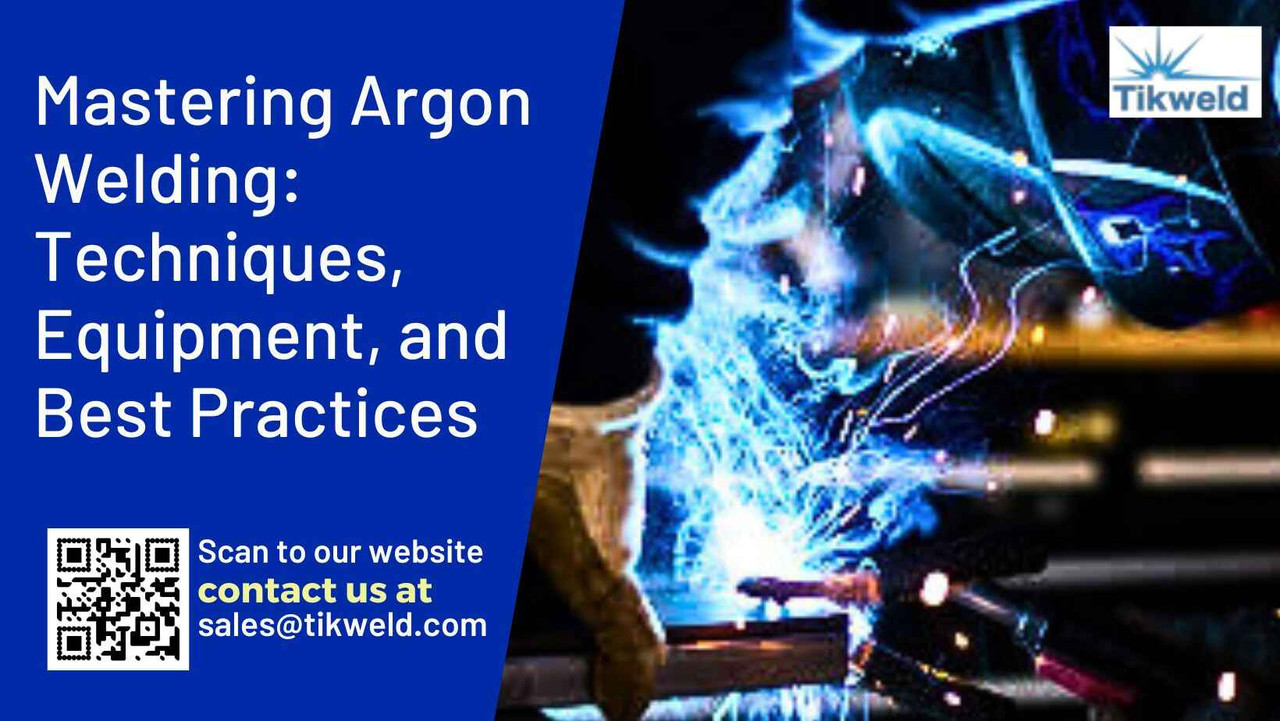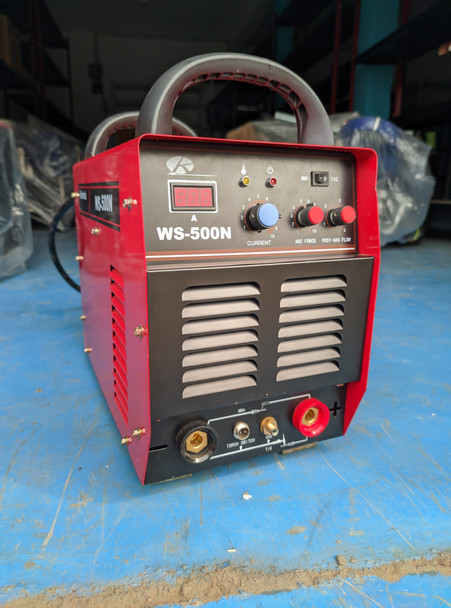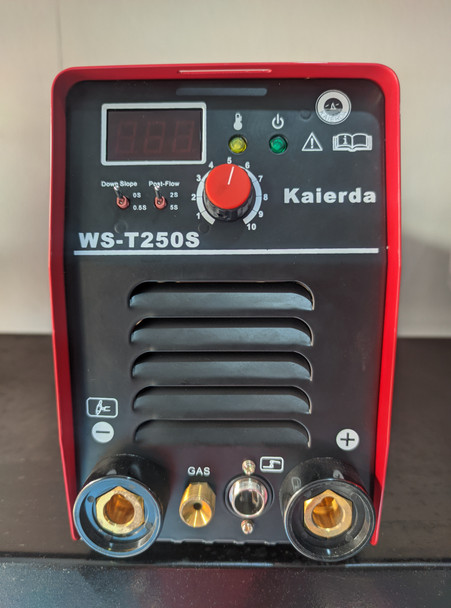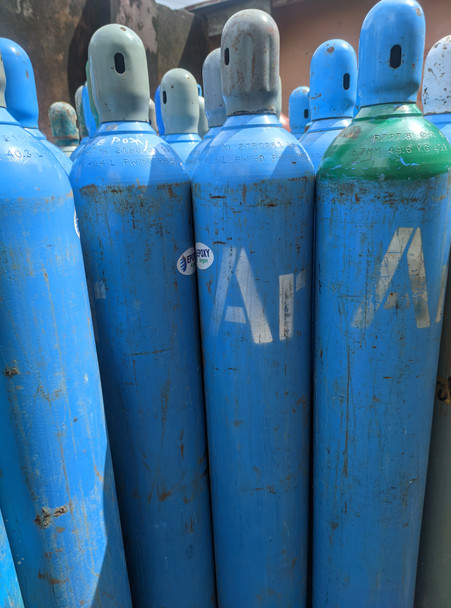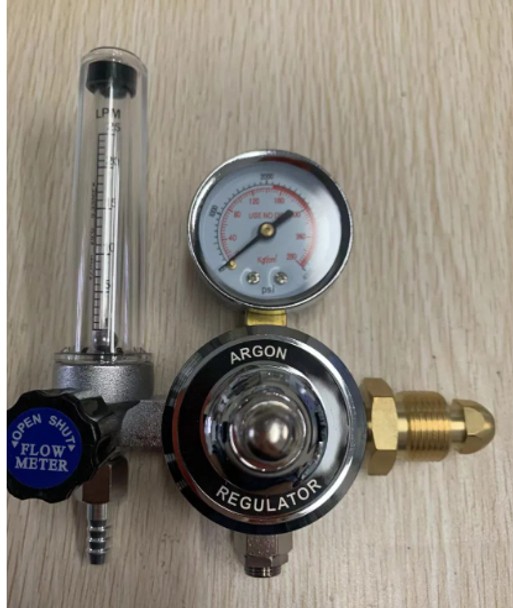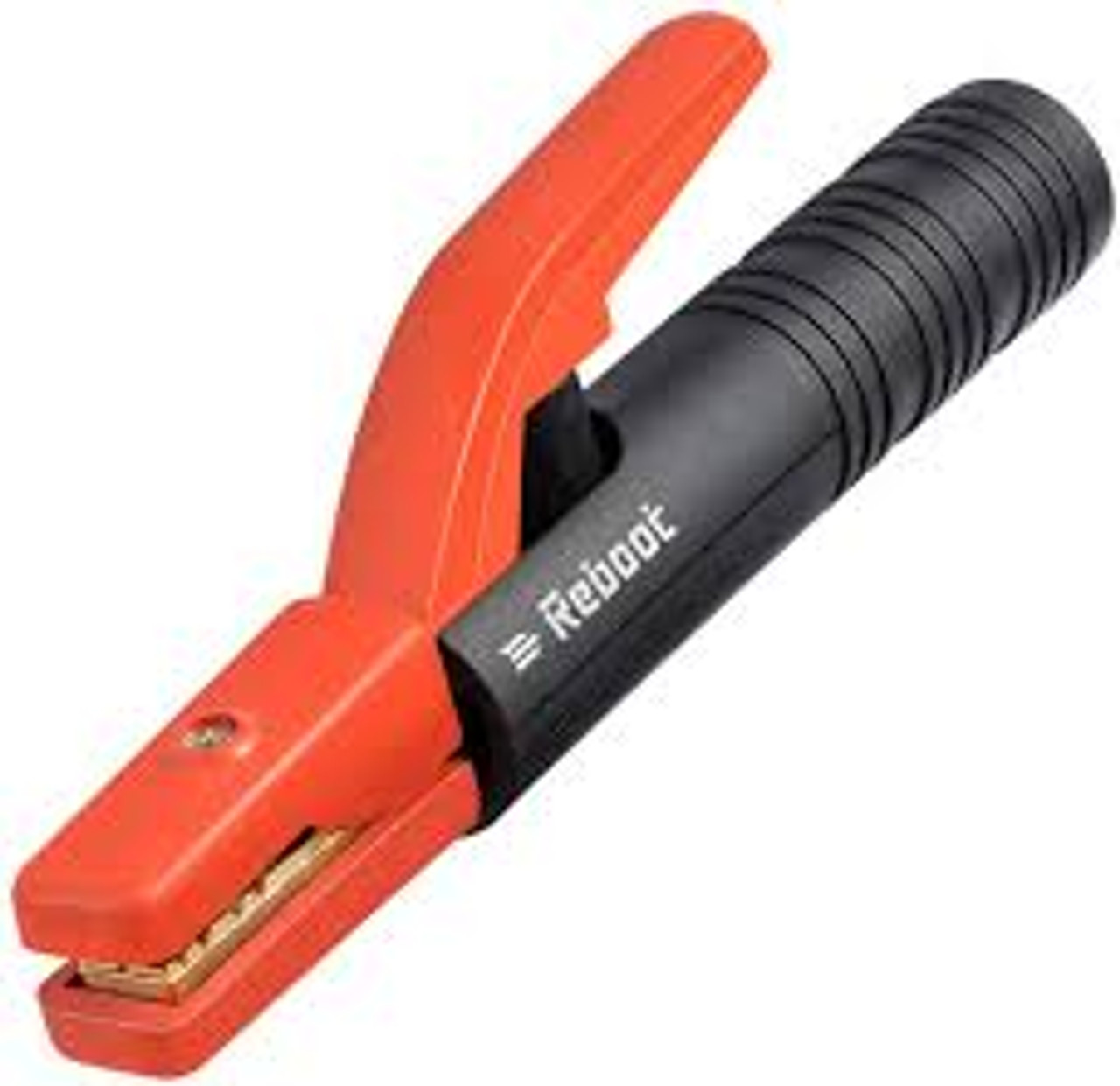Mastering Argon Welding: Techniques, Equipment, and Best Practices
Introduction
Argon welding, commonly referred to as Tungsten Inert Gas (TIG) welding, is a welding process that utilises argon gas as a shielding agent. This inert gas prevents contaminants from affecting the welding area, ensuring clean, high-quality welds. The process is particularly effective for welding non-ferrous metals like aluminium, magnesium, and copper alloys, but it’s also widely used for stainless steel.
One of the major reasons for the popularity of argon in TIG welding is its ability to produce precise, controlled welds, making it ideal for industries such as aerospace, automotive, and construction, where precision and strength are critical. Mastering argon welding means becoming proficient in both technique and understanding the importance of the equipment used.
Kaierda Tig Welding machine WS500N
Key Techniques for Argon Welding
Mastering welding techniques requires practice and attention to detail. Here are the essential techniques every welder needs to know:
1. Preparing Metal Surfaces
Before starting, it's vital to properly clean the metal surfaces. Removing any oils, rust, or dirt ensures that the weld will bond correctly without imperfections. A clean surface minimizes contamination and promotes smoother, more uniform welds.
2. Selecting the Right Welding Current (AC/DC)
The type of current you select depends on the material you're welding. For example:
- AC (Alternating Current) is typically used for aluminium and magnesium.
- DC (Direct Current) is preferred for steel, stainless steel, and other metals.
Understanding when to use AC or DC is key to producing clean, high-quality welds.
3. Torch Angle and Movement
Maintaining the correct torch angle—typically between 10° and 15°—ensures proper gas coverage and penetration of the weld. Smooth, consistent movements with the torch are crucial. Erratic movement can cause inconsistencies and defects in the weld bead.
4. Controlling Heat Input to Prevent Warping
One of the challenges of TIG welding is managing heat. Excessive heat can lead to metal warping, while too little heat results in poor fusion. Using a foot pedal to control the amperage allows welders to adjust heat input dynamically as they weld, especially in areas where the metal thickness varies.
Kaierda Inverter TIG/MMA Welding Machine WS-T250S
Common Mistakes and How to Avoid Them
Welders often encounter problems like porosity (tiny gas bubbles in the weld), poor penetration, and warping. These issues can often be prevented by:
- Ensuring proper gas flow
- Using the correct welding current
- Maintaining clean materials and work surfaces.
Essential Equipment for Argon Welding
Choosing the right equipment is crucial for success in argon welding. Let’s explore the fundamental gear required for high-quality TIG welds:
1. Argon Welding Machines (TIG Machines)
The TIG welding machine is the core of the process. Modern TIG machines allow welders to adjust current types (AC/DC) and amperage easily, providing flexibility for various welding applications. Key features to look for include adjustable pulse settings and smooth arc starts.
2. Electrodes (Types and Selection)
The electrode used in TIG welding is made of tungsten, a durable material with a high melting point. There are different types of tungsten electrodes, each suited for specific materials and conditions:
- Pure tungsten electrodes are used for aluminium and magnesium.
- Thoriated tungsten electrodes (often 2% Thoriated) are common for steels and other metals due to their durability and reliable arc starting.
3. Filler Rods (Material Types and Uses)
Filler rods are often necessary to reinforce the joint. Selecting the right filler rod depends on the base material:
- ER70S-2 is used for mild steel.
- 4043 aluminium filler rods are ideal for aluminium alloys.
- 309L is a great choice when welding dissimilar metals, such as stainless to carbon steel.
4. Safety Gear and Protective Equipment
TIG welding produces harmful UV light, so it's essential to wear a proper welding helmet with a lens that darkens automatically when an arc is struck. Additionally, fire-resistant gloves and jackets protect against sparks and heat. Don’t forget the importance of a well-ventilated workspace to avoid gas inhalation.
5. Argon Gas Cylinders and Flow Regulators
High-purity argon gas is the standard choice for TIG welding. Welders must ensure their argon cylinders are in good condition, and flow regulators are functioning properly. The right flow rate (typically between 10 and 20 cubic feet per hour) helps maintain proper shielding without excessive gas waste.
Argon Gas Compressed for shielding / welding
Best Practices for High-Quality Argon Welds
Achieving consistently high-quality argon welds takes more than just the right equipment—it requires an understanding of best practices, including gas flow, work environment cleanliness, and inspection procedures.
1. Gas Flow Rate and Shielding Techniques
To ensure a clean weld, it’s essential to maintain a steady flow of argon gas to shield the weld pool from atmospheric contamination. An inadequate gas flow rate can cause oxidation, resulting in weak and brittle welds. On the other hand, too much flow can cause turbulence and introduce air into the weld pool, also leading to contamination.
2. Maintaining a Clean Work Environment
Any dust, oil, or contaminants on the work surface can be drawn into the weld pool, causing defects such as porosity. Ensure that both the workspace and materials are clean before welding begins.
3. Inspection and Quality Control of Welds
After welding, it's important to visually inspect the weld for consistency. Check for even, smooth beads with no signs of contamination or cracks. A high-quality weld will have minimal spatter, and the bead will be uniform with good penetration.
Troubleshooting Common Issues in Argon Welding
Even the most experienced welders face challenges. Here are some common issues in argon welding and tips for overcoming them:
1. Porosity in Welds
Porosity refers to tiny gas bubbles trapped within the weld, which can weaken the structure. This problem often arises from contamination, improper gas flow, or moisture on the metal surface. To prevent porosity:
- Ensure metal surfaces are thoroughly cleaned and free of oil, rust, or moisture.
- Check the argon gas flow rate to avoid turbulence.
- Inspect gas hoses and fittings for leaks or damage.
2. Incomplete Fusion
Incomplete fusion occurs when the weld doesn’t penetrate properly, resulting in weak joints. To avoid this:
- Use the correct amount of heat for the material you’re welding.
- Ensure the torch is held at the proper angle and the filler material is being applied appropriately.
- Make sure the base material is adequately prepared and clean.
3. Contamination and Oxidation
Contamination happens when the molten weld pool is exposed to air, causing oxidation, which can appear as a discoloration or chalky residue. To avoid this:
- Ensure that the shielding gas (argon) is flowing consistently.
- Maintain a steady torch angle, keeping the arc directed appropriately over the weld pool.
- Avoid touching the tungsten electrode to the workpiece, as it can transfer contaminants.
4. Cracks and Distortion
High heat input or improper welding technique can lead to cracking or distortion in the metal. These issues are particularly prevalent when welding thin materials or metals that expand significantly under heat, such as aluminium. Prevention methods include:
- Use lower heat settings or employ pulse welding to control heat input.
- Allow the metal to cool between passes, especially with thick sections.
- Apply tack welds to hold the metal in place and minimise movement.
Argon Gas Regulator With Flowmeter
Safety Considerations
Welding is inherently hazardous, and safety should always be a priority. Here are some critical safety practices for argon welding:
1. Handling Argon Gas Safely
Argon is an inert gas, meaning it's non-toxic and non-reactive, but it can displace oxygen in enclosed spaces. Always ensure that your workspace is well-ventilated to prevent oxygen depletion, which can lead to dizziness, unconsciousness, or even suffocation.
2. Protecting Against UV Radiation and Burns
The arc produced in TIG welding emits intense UV radiation, which can cause severe burns, eye damage (known as welder’s flash), and long-term skin damage. Wearing flame-resistant clothing, gloves, and a high-quality welding helmet with a shade filter is essential to prevent exposure to UV radiation.
3. Electrical Safety in TIG Welding
TIG welding uses high amperage and generates significant heat, which poses an electrical hazard if not handled properly. Here are essential electrical safety precautions:
- Always use insulated gloves.
- Ensure your equipment is properly grounded.
- Avoid working in wet environments to reduce the risk of electric shock.
4. Maintaining Equipment for Safe Operations
Regular inspection and maintenance of your welding equipment, including torches, gas regulators, and power cables, are essential for safety. Any damaged equipment should be repaired or replaced immediately to avoid accidents.
Advanced Argon Welding Techniques
For those looking to take their welding skills to the next level, mastering advanced techniques opens up new opportunities. These techniques are crucial for handling specialised materials and complex welding applications.
1. Welding Exotic Metals (Titanium, Aluminum, Stainless Steel)
Different metals require different approaches in TIG welding:
- Titanium: Requires an ultra-clean environment and high purity argon to prevent contamination.
- Aluminium: Due to its high thermal conductivity, aluminium requires precise control of heat input, often utilising AC current to break the oxide layer on the surface.
- Stainless Steel: Use DC current and low amperage to minimise distortion and preserve the material's corrosion resistance.
2. Pulse Welding for Thin Materials
Pulse welding is a technique where the welding machine alternates between high and low current levels. This is particularly useful for welding thin materials like sheet metal, as it helps control the heat and minimises warping.
3. Multi-Pass Welding for Thick Materials
For thicker metals, single-pass welding might not provide sufficient penetration. Multi-pass welding involves making multiple welds on the same joint to achieve the necessary strength and durability. It's commonly used in structural welding applications.
Welding Electrode Holder 300AMP
Argon Welding in Industrial Applications
Argon welding plays a pivotal role in many industries due to its precision and strength. Here are some of the primary sectors where TIG welding is essential:
1. Aerospace
In the aerospace industry, TIG welding is used to fabricate and repair critical components, such as engine parts and airframes. The process ensures strong, lightweight joints that can withstand the high stresses and temperatures experienced during flight.
2. Automotive
In automotive manufacturing, argon welding is often employed for exhaust systems, body panels, and frames. The precision of TIG welding makes it ideal for high-performance vehicles, where lightweight materials like aluminium are commonly used.
3. Manufacturing
Argon welding is a go-to process in the manufacturing of machinery, tools, and industrial equipment. The clean welds produced by TIG welding help ensure product durability and longevity, particularly when working with stainless steel and other corrosion-resistant metals.
4. Repair and Maintenance
TIG welding is invaluable for repairs, especially when dealing with thin materials or intricate components. Its precision allows welders to make delicate repairs without causing further damage.
Frequently Asked Questions (FAQs)
1. What materials can be welded using argon (TIG) welding?
TIG welding is versatile and can be used to weld various materials, including aluminium, stainless steel, magnesium, copper, and titanium. It is especially suited for thin materials and non-ferrous metals.
2. How do I prevent porosity in my argon welds?
Porosity can be prevented by ensuring that the welding surface is clean and free of contaminants, maintaining the proper argon gas flow rate, and avoiding moisture on the materials.
3. Is TIG welding more difficult than other types of welding?
TIG welding requires more skill and precision than other forms of welding, such as MIG or stick welding. It often requires more coordination, as both hands are used—one for the torch and the other for feeding filler material.
4. How much argon gas should I use for TIG welding?
The standard flow rate for argon gas in TIG welding typically ranges from 10 to 20 cubic feet per hour (CFH), depending on the thickness of the material and the specific application. Too little or too much gas flow can cause weld defects.
5. Can TIG welding be done outdoors?
TIG welding is generally more suited for indoor environments because the argon shielding gas can be disrupted by wind, leading to contamination. If TIG welding must be done outdoors, precautions should be taken to block wind, or a gas lens can be used to stabilise the shielding gas.
Related Article
Argon Gas Welding: Creating Strong and Durable Welds
Master the Art of Precision Welding with High-Quality TIG Welding machine
Conclusion
Mastering argon welding requires a solid understanding of both the techniques and the equipment involved. By adhering to best practices, maintaining a clean work environment, and employing the correct safety measures, welders can consistently produce high-quality, reliable welds. Whether you're welding exotic metals in aerospace or working on automotive components, the precision and strength offered by TIG welding make it an invaluable skill.
As you continue to refine your argon welding abilities, always remember that practice and attention to detail are key. With the right approach, you can achieve mastery and take on more complex projects with confidence.
Looking to upgrade your welding equipment or get professional advice? Explore high-quality TIG welding machines, electrodes, filler rods, and safety gear at Tikweld Product and Services. Our expert team is ready to assist you in finding the right tools for mastering argon welding. Start improving your welds today!

